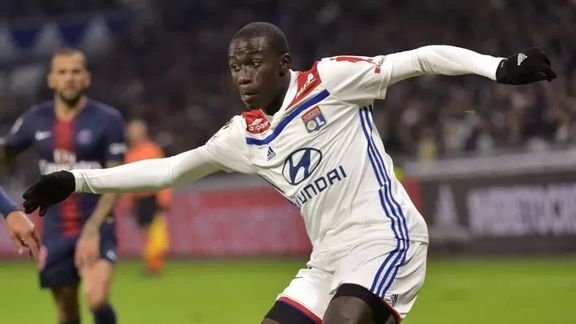In modern football, the role of certain players has evolved to encompass various responsibilities. Some athletes are not confined to a single area but rather adapt to different tasks on the field, showcasing both defensive and offensive skills. Their ability to adjust quickly makes them invaluable assets to their teams.
This adaptability is crucial for success, especially in competitive leagues. With tactical changes occurring frequently during matches, having a player who can effectively contribute to both the defensive line and attacking plays provides a significant advantage. Their dynamic approach often disrupts the opposing team’s strategies, creating opportunities for game-changing moments.
Such players often display a unique blend of speed, strength, and tactical awareness. They read the game effortlessly, closing gaps, intercepting passes, and initiating counterattacks. This flexibility allows them to support teammates across various areas, making them key figures in both maintaining team structure and launching offensive movements.
Role and Playing Style of a Modern Left-Back
Modern full-backs are crucial in both defense and attack. Their responsibilities have evolved, requiring them to be dynamic, fast, and versatile. In today’s game, they must support offensive plays while also being ready to track back and cover defensive gaps.
Often stationed on the left flank, this type of defender provides width and an extra option for passing during build-up play. Their role demands not just solid tackling and marking abilities but also the capability to deliver accurate crosses into the opponent’s penalty area. Speed and stamina are key attributes, allowing them to transition quickly between defensive duties and offensive support.
Defensively, these players need to read the game well, intercept passes, and block shots. Offensively, their overlapping runs create additional pressure on the opposing team’s defense, enabling more strategic attacking maneuvers. In essence, they operate as a bridge between the defensive line and the attacking force.
Defensive Strengths

Known for his exceptional defensive abilities, this left-back provides solid support to his team. His tactical awareness and physical attributes contribute to the backline’s resilience, offering a significant advantage during matches.
Speed is one of his primary assets, allowing him to quickly cover ground and close down opposing attackers. This rapid acceleration often disrupts counter-attacks and prevents dangerous situations from developing.
His tackling skills are equally impressive, characterized by precision and timing. Whether facing quick wingers or powerful forwards, he shows composure and a clean approach in challenges, minimizing fouls while regaining possession.
In aerial duels, his strength and leaping ability make him a valuable presence during set pieces. This combination of speed, tactical awareness, and physical prowess allows him to excel in his defensive role, providing a secure foundation for the team’s overall strategy.
Role in Attacking Plays

Modern full-backs have evolved into key contributors in offensive strategies. Their involvement extends beyond traditional defense, allowing teams to build dynamic attacks from the flanks. This participation provides both width and unpredictability to offensive maneuvers.
- Overlapping Runs: Full-backs often move forward along the touchline, offering passing options for wingers. These overlapping runs stretch the opponent’s defense, creating space for teammates to exploit.
- Crossing Ability: They frequently deliver crosses into the penalty area, aiming for forwards or midfielders. This skill is crucial for breaking through well-organized defensive lines.
- Link-Up Play: By exchanging quick passes with midfielders, full-backs help maintain possession and create opportunities. This interplay can disrupt defensive formations, opening pathways for attackers.
- Switching Play: Full-backs also contribute to changing the direction of play. By switching the ball to the opposite wing, they can exploit gaps in the opposition’s defense, allowing for a more balanced attack.
Their involvement in offensive play not only enhances the team’s attacking options but also requires a balance between advancing forward and maintaining defensive duties.
How He Adapts to Different Formations
In modern football, versatility is crucial for a defender. This player showcases adaptability by seamlessly fitting into various tactical setups, adjusting his style to meet the needs of the team. His ability to transition between different roles highlights his tactical awareness and physical prowess.
- Four-Back System: In a traditional four-defender formation, he often operates as a left-back. His responsibilities include supporting the attack while maintaining a solid defensive line. He balances between moving forward and tracking back efficiently.
- Three-Center-Back Setup: When deployed in a three-at-the-back system, his role shifts to a more dynamic wing-back. He provides width, pushing higher up the pitch to deliver crosses and contribute to offensive plays, while still being expected to drop back defensively.
- Midfield Support: At times, he is utilized in a more advanced role, acting almost like a wide midfielder. This change requires him to showcase his dribbling skills and passing accuracy, linking up with forwards and midfielders to maintain fluid gameplay.
- Inverted Role: Some tactical approaches see him cutting inside rather than staying wide. This allows the team to overload the midfield and control possession, creating opportunities for counter-attacks and quick transitions.
His adaptability to these varying formations demonstrates not just physical capabilities, but also a deep understanding of different tactical demands.
Comparison with Other Left-Backs
Analyzing the playing style and effectiveness of a specific left-back involves comparing their contributions to those of their peers in the same role. This evaluation highlights differences in defensive capabilities, offensive support, and overall impact on their team’s performance.
When comparing different players in this position, several key attributes come into focus:
- Defensive Skills: Assessing their ability to thwart opposing attacks, block crosses, and maintain positional discipline.
- Offensive Contribution: Evaluating their involvement in advancing the ball, crossing accuracy, and ability to link up with forwards.
- Stamina and Work Rate: Considering their endurance and consistency throughout the match, particularly in covering the entire flank.
- Tactical Awareness: Analyzing their understanding of game dynamics and adaptability to different tactical setups.
Comparing these attributes provides insight into how one left-back’s skills stack up against others and their overall influence on their team’s success.
The Importance of Proper Placement
Effective placement on the field is crucial for maintaining defensive stability and enhancing offensive opportunities. The role of a player in this context involves positioning themselves strategically to support their team’s tactics and adapt to the dynamic nature of the game.
- Defensive Coverage: Proper placement ensures that gaps in the defense are minimized, reducing the likelihood of opponents exploiting weak spots.
- Offensive Support: Strategic positioning helps in creating attacking opportunities by overlapping runs and providing additional options during offensive plays.
- Fluidity in Play: The ability to adjust positioning based on the flow of the game contributes to smoother transitions between defense and attack.
By mastering their placement, players contribute significantly to their team’s overall performance, balancing defensive solidity with offensive potential.




